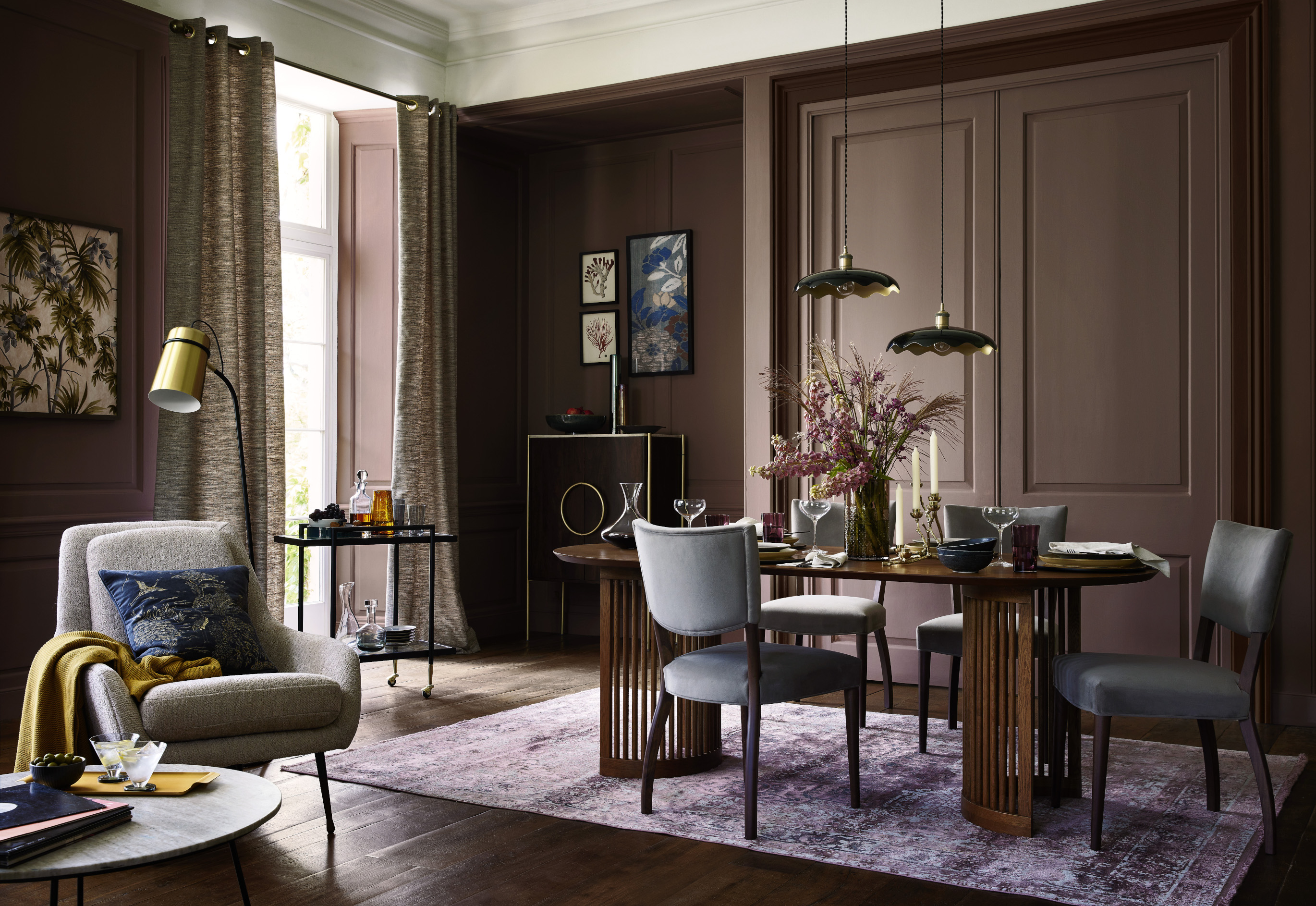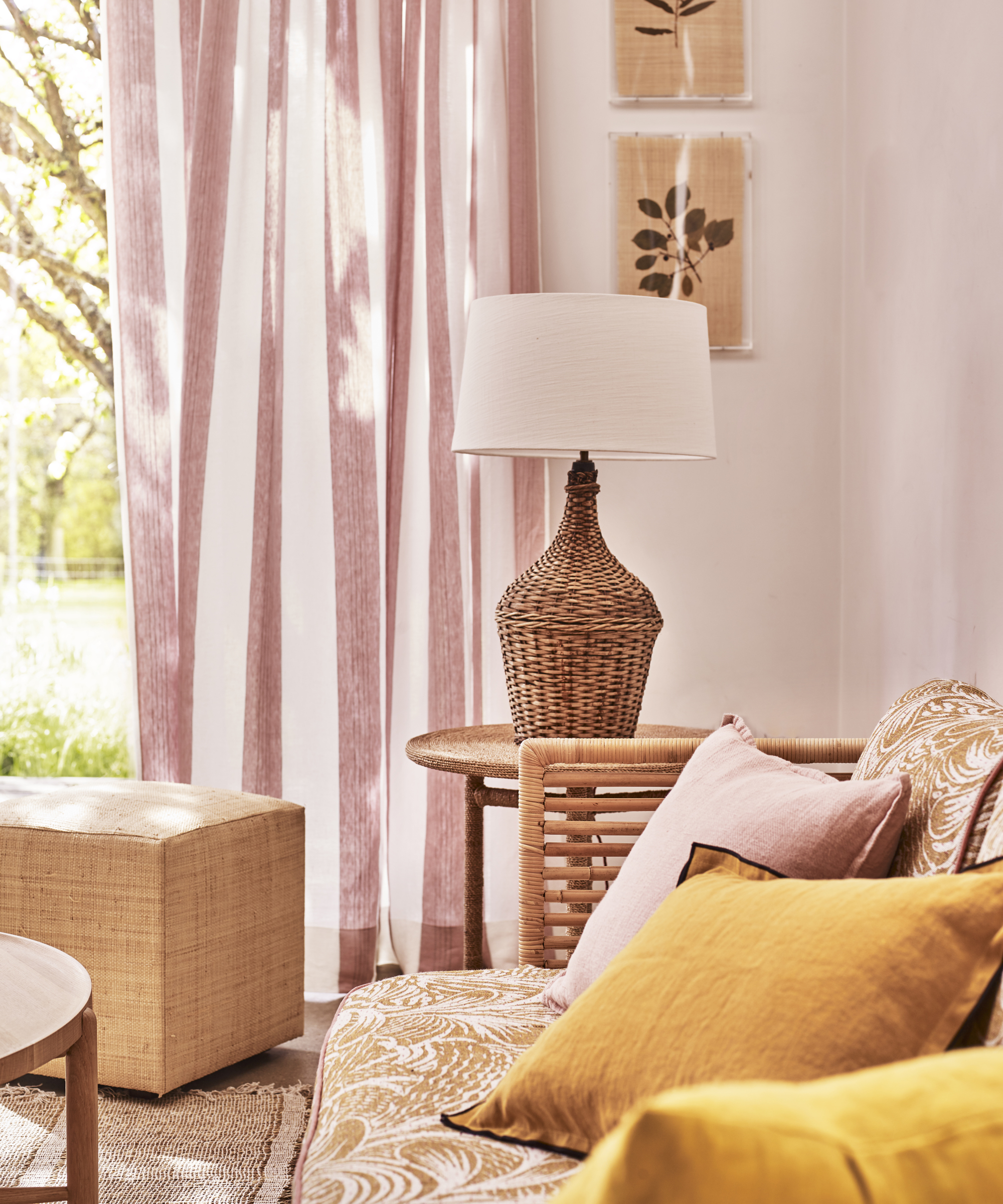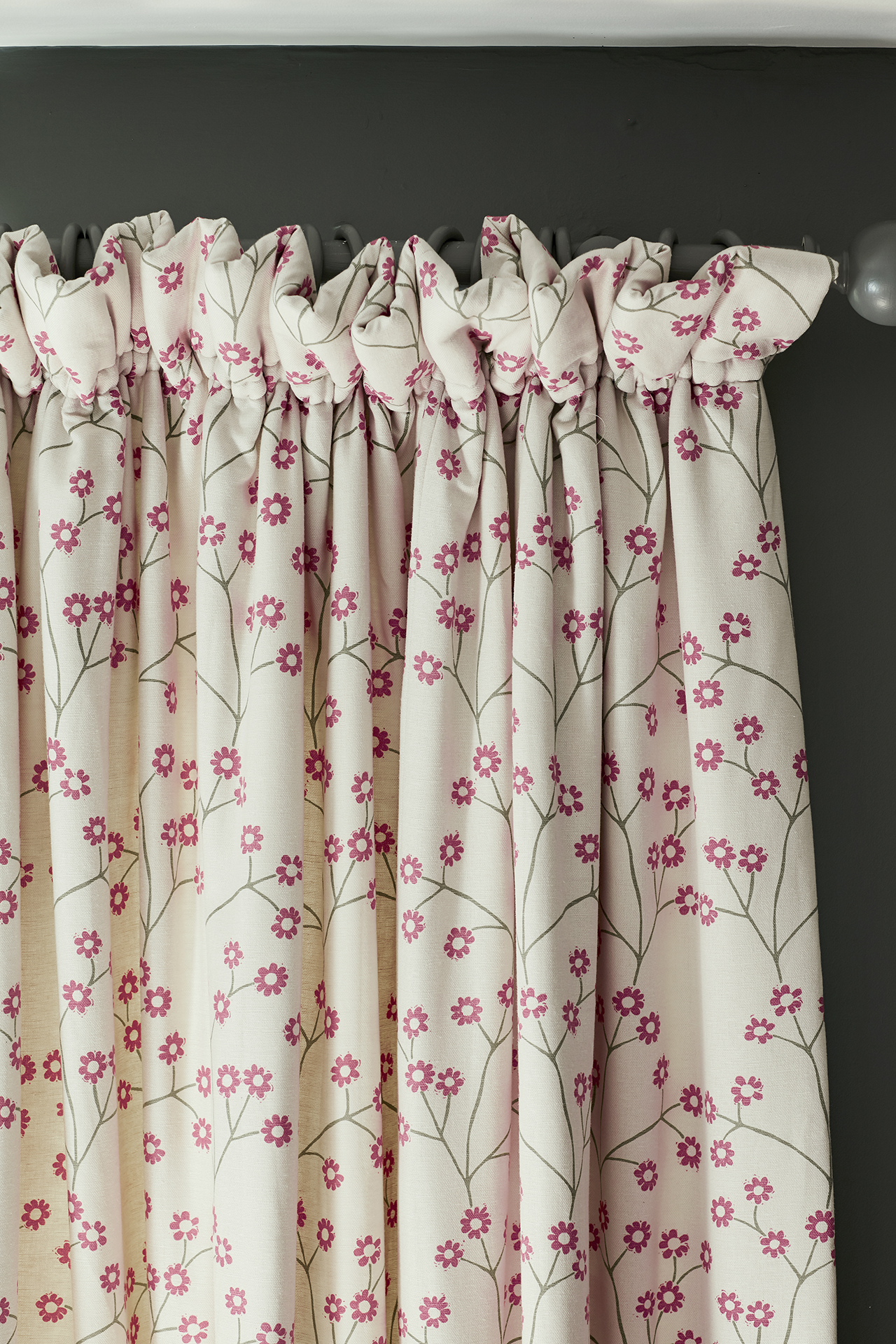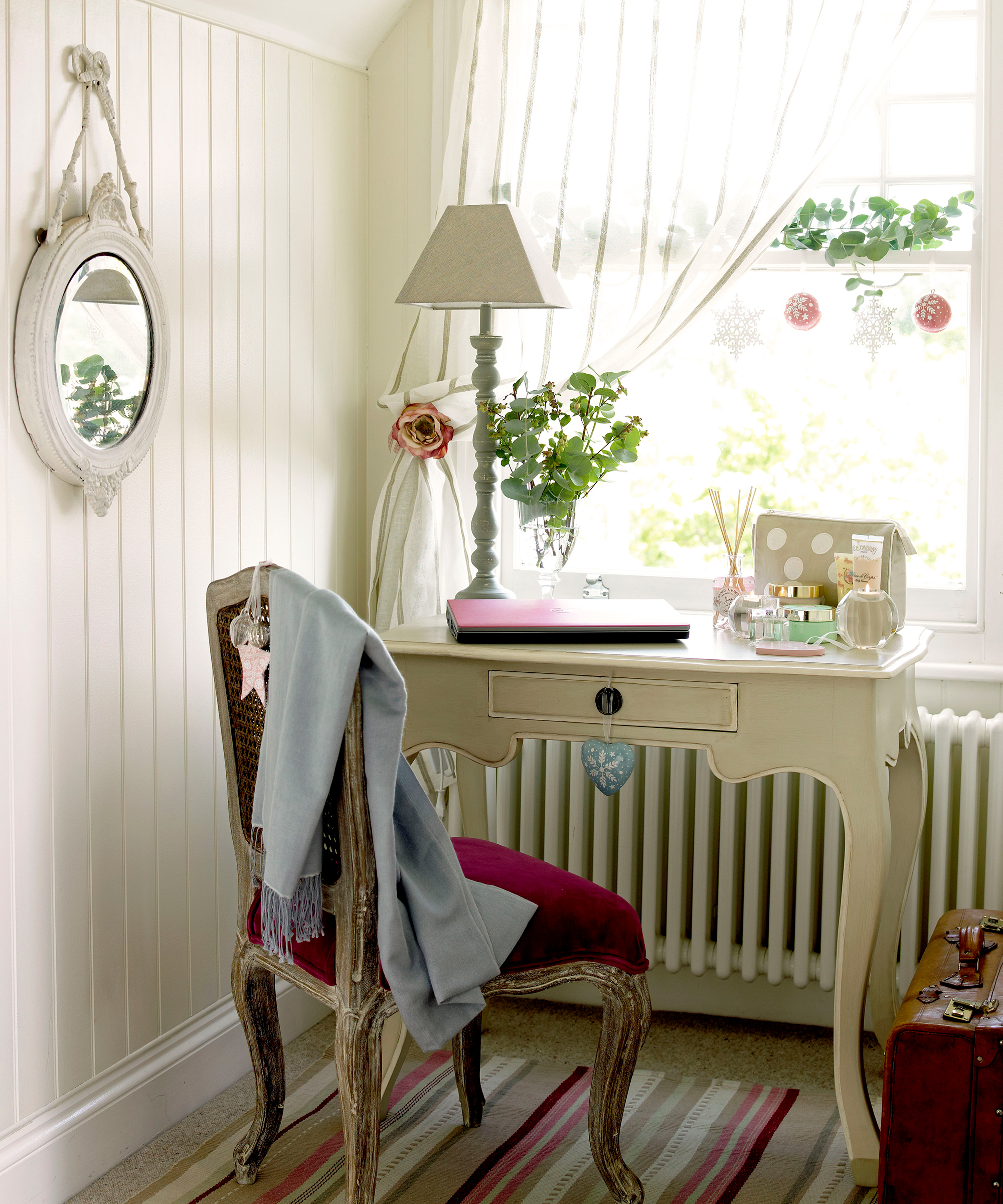How to hang curtains – with or without a rod
Dress up windows beautifully. This is how to hang curtains with or without a rod


Window bare? You’re missing a great decorative opportunity if you’re not wondering how to hang curtains with or without a rod. A room that’s overlooked is lacking privacy as well, or you might be living with glare that would be better softened by sheer curtains.
To hang curtains where there weren’t any before, you can put up a rod, but if you don’t want to fix one of these to the wall or prefer a different look, they can be hung without a rod as well.
Our guide has the bottom line on how to hang curtains with or without a rod for window treatment ideas for every room.
How to hang curtains with or without a rod

Most often curtains are hung from a rod, and so you’ll need to install this first before you proceed to hanging the curtains.
However, it is possible to hang curtains without a rod if you don’t want to drill into the wall.
We’ll cover how to hang curtains with and without a rod by explaining how to install a rod, and then offering alternative ways to hang curtains.
Measure for a curtain rod

If you are using a curtain rod to hang curtains, you’ll first need to determine the size of curtain rod required for the particular window. It’s preferable for curtains to hang from above the window and around it so they don’t cover the glazing when they are open, and the window looks larger. To achieve this, measure the width of the window and add around 10 to 12 inches (25 to 30cm) for each side of the window; that is, add 20 to 24 inches (51 to 61cm) total.
Design expertise in your inbox – from inspiring decorating ideas and beautiful celebrity homes to practical gardening advice and shopping round-ups.
Bear in mind that the rod’s width does not include finials, so check their dimensions individually. If there is insufficient space available on the wall either side of the window for the rod plus finials you prefer, you can add 4 or 5 inches (10 or 13cm) either side of it rather than the larger measurement above.
Plan to hang the rod 8 to 10 inches (20 to 25cm) above the window. Alternatively, in a room with very high ceilings, you could place the rod some 12 to 24 inches (30 to 61cm) above the window, or fix it just below the crown molding. As a minimum, a rod should be 2 inches (5cm) above the window.
Knowing the width of the rod and the length from the top of the rod to the floor will enable you to follow the necessary steps of how to measure for curtains.
Install the curtain rod

To fix the rod, mark the position of its brackets at the correct height and at an equal distance from the sides of the window. Check the marks are level. A stud finder can reveal whether the brackets line up with studs; if they don’t, use wall anchors after drilling. Fix the brackets to the wall.
Some curtains – for example grommet or eyelet top – are threaded directly on to the rod and the rod with the curtains can then be set in the brackets and the finials added. If the curtains are hung from hooks, place these on each curtain first, then slide the rings on to the rod before hooking the curtains to the rings.
Where should a curtain rods be placed?
Curtain rods should be placed near to the top of the window frame – but do leave a gap to give some visual breathing space – within 5in to 8in is best. You can place a curtain rod higher if you want to make windows feel taller, but if the rod is too far away from the window frame there will be a visual disconnect, so do experiment first. Curtain rods can also be hung from ceilings if there is no space between the frame and the ceiling.
How to hang curtains without a rod

Wondering about how to hang curtains with or without a rod? There are a few reasons why you might contemplate the second route. For example, you might want a more slender option than a curtain rod, you might like an alternative look, or you could prefer not to drill into the wall.
If you want to hang curtains without drilling, remember that a tension rod has a spring mechanism so that it will stay in place across a window, but otherwise these are the options:
Curtain wire can be fixed across the width of the window. This is easy to fix with eyes at either end of the wire attached to hooks fixed to the window and the curtain threaded on to the wire. This can work with sheers or lightweight curtains.
Rope is an alternative to curtain wire and can complement country or cottage style decor. It’s best teamed with curtains with grommets. Make sure you stretch the rope until it is taut when you fix it to avoid sagging.
Cabinet knobs can be used to hang tie-top curtains. Install them on the wall at the same distance as the ties. As you can’t move the curtains with this method, it’s best saved for sheers that stay in place across the window.
What is the rule for hanging curtain rods?
The placement of the curtain rod is all important. Follow our guidelines with the rod 8 to 10 inches (20 to 25cm) above the window or, in a room with very high ceilings, 12 to 24 inches (30 to 61cm) above the window, or position it just below the crown molding. If there is little space, position the rod at a minimum of 2 inches (5cm) above the window.
Add a minimum of 4 or 5 inches (10 or 13cm) to the window’s width on each side, but preferably add around 10 to 12 inches (25 to 30cm) at each side of the window.
Be consistent within a room so that each curtain rod is at the same height.

Sarah is a freelance journalist and editor. Previously executive editor of Ideal Home, she’s specialized in interiors, property and gardens for over 20 years, and covers interior design, house design, gardens, and cleaning and organizing a home for Homes & Gardens. She’s written for websites, including Houzz, Channel 4’s flagship website, 4Homes, and Future’s T3; national newspapers, including The Guardian; and magazines including Future’s Country Homes & Interiors, Homebuilding & Renovating, Period Living, and Style at Home, as well as House Beautiful, Good Homes, Grand Designs, Homes & Antiques, LandLove and The English Home among others. It’s no big surprise that she likes to put what she writes about into practice, and is a serial house renovator.